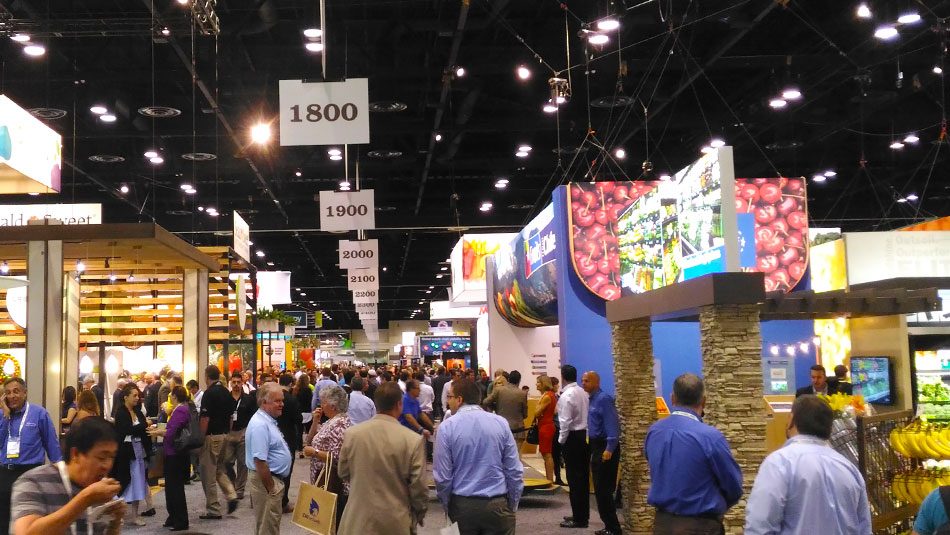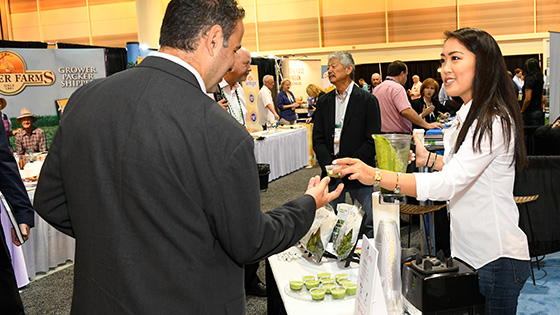
Food Trade Shows: Good Or Just Leftovers?
At this point you’ve probably logged more food trade shows than you’d like to admit. And, while I’m sure you’re looking forward to feeding the enthusiastic flood of trick-or-treaters and looky-loos, the idea of yet another trade show season brings on that nagging question we food marketers must ask ourselves at every turn. Are the business objectives we’re achieving worth the resources we’re investing here? Is attending this next show really the most efficient way to meet these objectives? Is this the right use of the budget, not to mention everyone’s time away from their day-to-day responsibilities?
With show floor space running on average $35 per square foot and, according to Exhibitor Magazine, display costs coming in at 3 times this amount, trade shows can easily end up as one of the larger expenses on your budget sheet. And these costs are just the tip of the iceberg. There’s also the added expense of graphics, flooring, AV, furniture, show service fees, sales collateral, promotional tools, travel expenses and staffing. Add all this together and the decision to exhibit is not an easy one to make. But, there is no need to attend a show simply because that’s what you’ve always done. So what are some good reasons? What makes a trade show both enjoyable and productive? And is there a way to guarantee a return on your investment?
Sales teams are an obvious benefactor of trade shows. But, it’s also important to consider how the show can impact your marketing, creative, and HR teams. Designers can gather insight and information on trends; marketers can get a peek into competition and meet with media; HR can scope out new talent; and the C-suite can investigate potential growth opportunities and meet with investors. Trade shows offer a unique opportunity to deliver results across your team’s varied business objectives. However, not every food show packs the same punch.

Photo Courtesy of PMA Fresh Summit
When thinking back to the countless shows we’ve attended over the years, there are a few common themes and standout moments that have made those bustling days spent in a booth worthwhile. If your next show offers a healthy mix of the following, it’s a good indication you could be in for one of those memorable and very productive trade show experiences that leaves you and your team refreshed and ready for the new season ahead.
Momentum and Growth
The health of any food trade show will fluctuate with the state of the industry. When things are going well in the business, a trade show should reflect that momentum. So, before you book your next food show, get a sense of its health by taking a quick look at its show reports. If you cannot locate this information online, contact show management directly. A healthy show should have a steady and/or slow increase in attendance, be well attended by top relevant media, and have a good mix of legacy and start-up brands. Show management should be prepared to share insight regarding which top retailers are attending, what media is registered and which brands are exhibiting. If you get a sense show attendance has shifted from the intended audience it originally drew, it may be an early indication that you should shift strategies. At the close of the day, a great show is buzzing with energy and enthusiasm which carries with it new opportunities for your brand.
Innovation That Inspires
Food brands seen as thought leaders among their peers must be on the forefront of market trends. To remain ahead of the curve, trade shows can be a powerful tool for food marketers who know how to leverage this platform to soft launch new product lines, test new concepts and gather insights. Delight new and existing retail partners by testing new recipes or menu items, unveiling new produce varieties or retail technology through interactive displays, showcasing forward-thinking packaging concepts, or gathering insight with engaging booth surveys. If innovation is the heartbeat of an industry, newness is the king of the trade show. Show your retailers you’re stretching your offering with fresh thinking that not only advances the industry, but becomes a tool they can use to increase their traffic, turnover, and sell through.
Get the Timing Right
This one is fairly straightforward but often overlooked. If your trade show dates fall after your buyer allocates his or her OTB dollars, then it’s time to reconsider your investment. Show dates are often based on convention space availability and can conflict with industry needs. While it’s hard to imagine skipping a show after you’ve been locked in for multiple seasons, there is little point to join the party after everyone has left.
Movers and Shakers – Be One
From industry influencers and top-tier media to retailers and peer groups, everyone attending your prospect trade show is driven by the same interest – business in the food industry. With this shared connection, a food show becomes a very natural and authentic way to approach and grow your network. Using the time to connect with likeminded people who are primed to hear new ideas, share stories, and create opportunities, makes a trade show just the starting point for your ROI to be realized. Great partnerships have the potential to inspire new use occasions, open doors to new markets or sales channels, and expand awareness around your brand by way of introducing it to new end-users. In this case, one indication of a great show may not be in the moment, but start with the moment. According to the Center for Exhibition Industry Research (CEIR), 85% of decision makers had not been called on by a sales person before the show. So be sure to create an environment around your booth that encourages these connections (and more) to occur and flourish.
While it may be tempting to skip a few trade shows, the fact is, displaying at a trade show provides food brands with a platform to showcase the full range of their product offering in a way not possible in the marketplace. When the power of a brand is celebrated in this unique way, food buyers are inspired by the potential and will likely carve out more shelf space. In today’s crowded marketplace where consumers’ buying decisions are driven by their values, retailers are looking for brands with a story to share and not just a product to sell. Trade shows can help food brands better tell these stories. So, if you decide to make the trade show investment, task your team to make the most out of this opportunity to convey your brand’s story on multiple levels.






